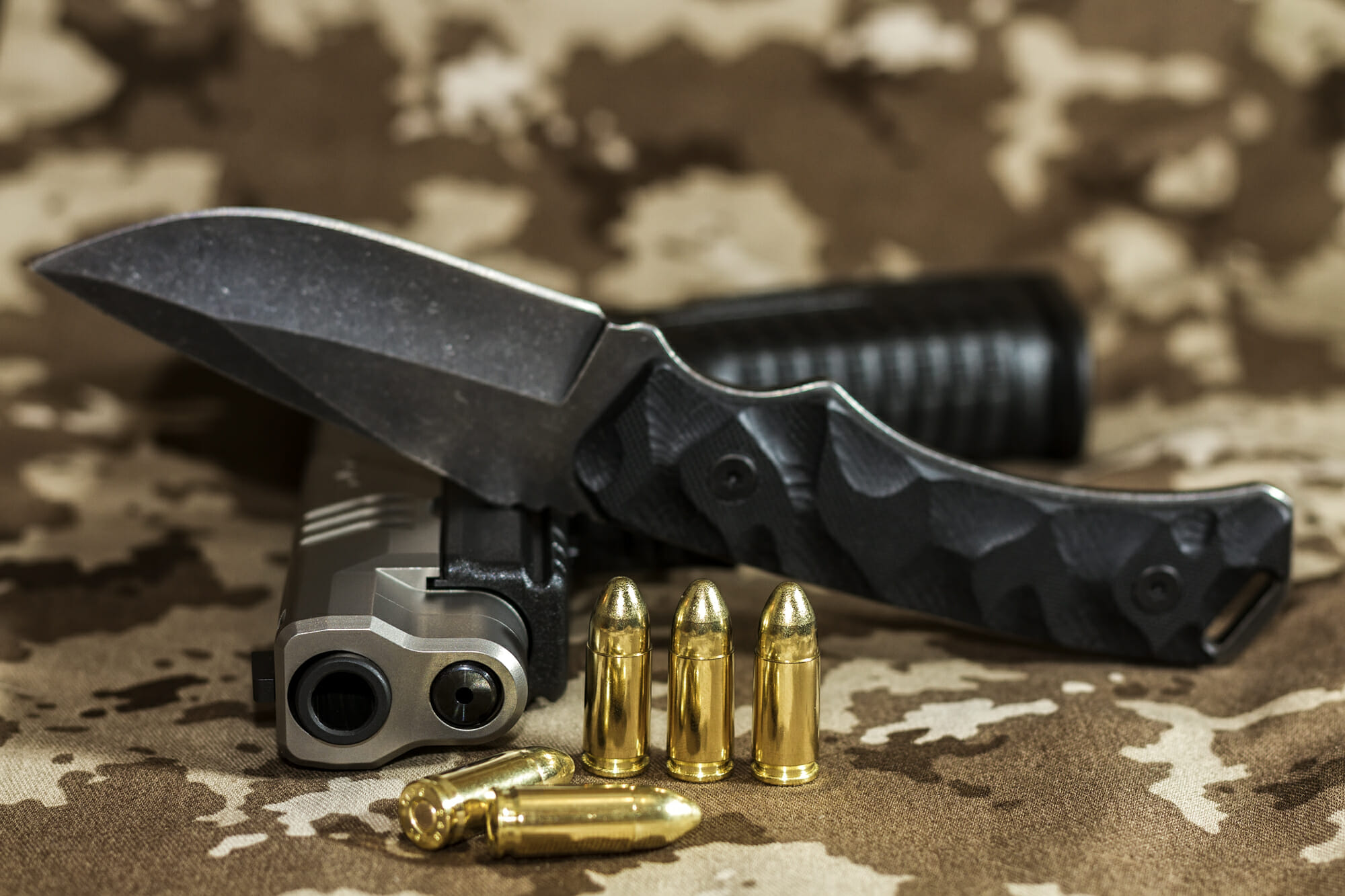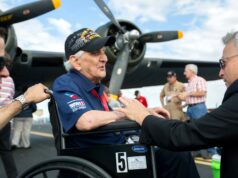 TOOLS and TARGETS addresses physically defending yourself by attacking and neutralizing the threat. This isn’t the civilized predictable world within the dojo or the clean, imaginary world of movie fights. FIGHT DIRTY and keep fighting. Fight like your life depends on it because in all likelihood, it will. In Part 1 and Part 2 of Self-Defense for Flight Crews, we covered the mental chess game that is self -defense and how to turn a would-be attacker’s predator mindset into the mindset of the prey. We covered what the OODA loop is and how to avoid being paralyzed in “Decide” mode. Part 2 explored the Five Stages of Situational Awareness and the daily exercises that will improve your situational awareness immediately until it becomes habitual. Part three of Self-Defense for Flight Crews covers the sets of the most effective and easily used physical tools your body has, and how to hit the most vulnerable and available targets of your attacker. These aren’t the only tools or targets you can use, but they are the ones that don’t require a great deal of strength or the skillful accuracy of a martial artist to be wickedly effective. The objective of Tools and Targets is to neutralize the threat so that you can get away without the threat getting up and attacking you again.
TOOLS and TARGETS addresses physically defending yourself by attacking and neutralizing the threat. This isn’t the civilized predictable world within the dojo or the clean, imaginary world of movie fights. FIGHT DIRTY and keep fighting. Fight like your life depends on it because in all likelihood, it will. In Part 1 and Part 2 of Self-Defense for Flight Crews, we covered the mental chess game that is self -defense and how to turn a would-be attacker’s predator mindset into the mindset of the prey. We covered what the OODA loop is and how to avoid being paralyzed in “Decide” mode. Part 2 explored the Five Stages of Situational Awareness and the daily exercises that will improve your situational awareness immediately until it becomes habitual. Part three of Self-Defense for Flight Crews covers the sets of the most effective and easily used physical tools your body has, and how to hit the most vulnerable and available targets of your attacker. These aren’t the only tools or targets you can use, but they are the ones that don’t require a great deal of strength or the skillful accuracy of a martial artist to be wickedly effective. The objective of Tools and Targets is to neutralize the threat so that you can get away without the threat getting up and attacking you again.
TARGETS
The attacker’s eyes
You rarely see actors having a fight in the movies going for gouging the eyes. That’s because it usually means a real fight is ended before it begins and it’s just not macho enough to seem fair. In the real world, if you gouge with the intent of doing real damage or taking the eyes out, it doesn’t matter how powerful, big, or strong the bad guy is, they forget about attacking you and concentrate on getting away from the pain and threat to their eyes. It’s one of nature’s subliminal prime directives for survival. The reason predators prefer weak, unaware, or ill targets is that it requires less risk of damage to themselves. A blind or crippled lion doesn’t survive long without becoming prey itself. The same animal instinct and reaction to extreme pain is present in humans and overrides our conscious commands.
The attacker’s fingers
Like eye gouges, releasing one’s hold on you by seizing a finger and breaking it or bending it back will work, too. It works quicker and far better than grabbing their arms or hands and trying to match strength for strength. There will always be someone bigger, stronger, or more well trained than you. The police tactic that applies to this is “Control the hand, control the man.” (I can expand on the techniques you can use for this, as well as breaking holds, joints and disarming attackers if you’re seated and strapped in with the attacker behind you. That tactic alone requires a short illustrated article.)
The attacker’s groin
We’re all familiar with why this works. Kicks, grabs and punches still work, even if the attacker is behind you and has you in a bear hug. Specifically, spur kicks with your heel and a grab and twist action are effective.
The attacker’s fingers, knees, and elbow joints
It only takes five to seven pounds of force to break a knee joint, even less an elbow or finger. Kicking a knee out from the front or side is a break. Kicking or pushing the bend in the knee from the back collapses the opponent. With a break, you take out their base and they can’t pursue you. Your goal is to attack and neutralize the threat. Break points force the joints in the opposite direction of the way they’re made to bend. Collapse points, like those found where the hips connect to the thigh, the elbow, knees, fingers and shoulders make the joint bend when pushed or kicked to collapse the arm, legs or torso of your opponent.
The attacker’s throat
Attacking someone’s throat is probably one of the most lethal targets you can aim for, which explains why so many attackers go for yours. We have two carotid arteries, located on each side of the neck, which supply all blood flow to the brain. Putting pressure on these with hands or a headlock can cause a loss of consciousness in six to ten seconds. A minute or more of choking results in death. If it’s just a ten-second full-on choke and then you release, they should regain consciousness in about five or six seconds. This is why you should never practice chokes without the supervision of a professional.
Along with the two major sources of blood to our brains, the throat also contains our only airway, the trachea, and our spinal column. If you put your finger on that beautiful delicate indentation in your throat called the “neck dimple” or laryngeal prominence, and push (gently down and in) you’ll see why a fist, elbow, or even a finger here is so effective. A heavy hit to this area will crush the trachea, break the hyoid bone and result in the windpipe swelling shut and very probably death in approximately 5 minutes. Again, NEVER hit anyone in the throat unless you intend to severely injure them. A thumb or fingers in the neck dimple, however, should dissuade them from hurting you.
The attacker’s ears
Cupped or flat palms aggressively slapping the sides of your attacker’s head over the ears stuns them. A percussive strike like this causes severe pain and has the potential to burst their eardrums.
The attacker’s nose
Fortunately or unfortunately, what you’ve heard about hitting someone’s nose and driving a bone into their brain isn’t true. The nose is mostly composed of cartilage. That said, it’s still a very effective target because of its delicate nerves, the immediate pain and stun factor when hit.
The attacker’s head
The head may sound like it is too broad a target. The reason I’m including it in this very brief list of potential body targets is because controlling your attacker’s head is another popular tool used by law enforcement to control their own attackers. Wherever your head turns, the body follows. The hooked bones that literally connect your skull to your vertebrae are a relatively fragile structure called the occipital bone and the Atlas, or the atlanto-occipital joint. If an attacker has you against a wall or on the ground, an upward elbow or heel palm to the chin will knock him back. If you’re standing or up against a wall, this is particularly effective in keeping him on his heels. Always keep going into the attacker and keep striking or pushing upwards under the chin to keep them off balance or drop them. Grabbing the head or the hair close to the scalp and twisting the head to the side and down can turn or throw them. Bear in mind that it can also break a person’s neck and kill or paralyze them. Be judicious and responsible in a non-life threatening environment. If you opt to practice, do so under the watchful eye of a professional and be very gentle in anything involving head/neck manipulation.
There are many more targets I haven’t yet mentioned, but these are a few of the best. A good rule of thumb in a real life situation is: ALWAYS KEEP HITTING THE CLOSEST TARGET WITH YOUR CLOSEST TOOL. This creates many more targets in one strike, a smoother natural flow, speed and efficiency of movement. It’s also important to keep your balance. That means feet shoulder width apart with knees slightly bent. (Locking your knees makes it easy to push you off balance.) Stay loose and relaxed. This allows you to breathe, move and absorb impacts better. Keep your posture upright head over shoulders and don’t weave around unless you’re dodging punches. Remember, the body follows where the head goes, so if you throw your head around outside of your alignment center, you’ll throw yourself off balance.
TOOLS
As in TARGETS, there are many more tools you have at your disposal than the few I’m going to list for you here. I’ve chosen these particular tools because they’re powerful, a natural go-to, and they don’t require a great deal of accuracy. Even an advanced martial artist or marksman loses 60% of their fine motor skills in a stressful situation. Tools are just something you use to strike at the target. A good rule of thumb is: NEVER HIT ANYTHING HARDER THAN YOUR TOOL WITH YOUR TOOL.
Feet
Your feet can be used to kick, stomp, or push targets on your attacker. Kicks are good tools for keeping attackers with knives at a distance and away from you. Make your kicks low and fast to avoid being cut or having your leg grabbed. Kick the knees and take out their base. If you’re going to do a front snap-kick, keep your toes turned up and strike with the ball of your foot. If you’ve ever had a jammed or broken toe you know why.
Elbows
Elbows are one of my favorite tools. You can strike in any direction with elbows. They’re strong, solid bones with a lot of muscle power behind them. Most fights happen in close proximity where fists have little room. The hand is a delicate structure with 27 small fragile bones, nerves and joints, better used for grappling, eye pokes and more detailed strikes. There are upward elbow strikes, side elbows, back elbows and downward elbows designed to use gravity to take your opponent down.
Knees
Everything I’ve said about elbows applies to knees except for the omnidirectional advantage of elbows. The closest tool to the closest target is great for close proximity groin shots. If you’ve doubled your attacker over, a knee to the head combined with a downward elbow should neutralize the threat.
Hands
Hands are great for grappling, grabbing fingers, ears, hair and jabbing eyes as well as percussive strikes to the ears. Heel palms are good tools to keep your attacker retreating on their heels. Fists are good at distances closer than long kicks. Fists will be a natural first go-to tool in a real fight. Just don’t forget your other options and don’t forget to avoid or block the threat first. Remember ACA (AVOID the threat / CONTROL the threat / ATTACK and neutralize the threat).
Forearms
This overlooked tool is good for clotheslining your attacker’s throat, strikes and generally pushing them back.
Head butts
Again, never hit anything harder than your head with your head. A rear head butt to your attacker’s face (particularly the nose area) is a great way to defend yourself from a being grabbed and held from behind. Front head butts are best used striking your attackers nose with your forehead. You’ll get your own bell rung if you hit something harder.
THINGS TO REMEMBER WHEN DEALING WITH GUNS AND KNIVES
ACA = Avoid / Control / Act (neutralize the threat)
GUNS
I would rather have the barrel of a gun against my head or body because it’s much easier to avoid it, control it and use it against my attacker when I know where it is and can reach it. Realistically, the bullet is not really going to get to the target any slower from a few feet away. A simple sideways pivot with your elbows against your body and your hands up can get you out of the line of fire if done quickly and correctly, while simultaneously blocking, grasping and controlling the weapon. The reaction time it takes for a shooter to realize what you’re doing, decide to pull the trigger and send the signal from the brain to the trigger finger response is roughly 31/100 of a second in prepared police trials. This is considerably slower than the 9/100ths of a second it takes for you to pivot out of the way and control the weapon. Action beats reaction. The muzzle of the gun is the only threat. When you control that, you control the situation. In controlling the barrel you can grab it from below or above, even from the side although below or above the barrel is best for leveraging it out of the opponent’s grasp. Grabbing the barrel firmly from above has the added advantage of stopping the slide from feeding a bullet into the chamber or firing if it’s a semiautomatic hand gun. The object is to never, ever let the muzzle of the gun cross anything you don’t want shot, especially you. And NEVER cover the muzzle of the gun with your hand while controlling the barrel. It’s fine if the barrel points at your attacker, in fact, there is a seated technique that will not only prevent you from being shot but will force your attacker to shoot themselves. But that’s something that needs to be thoroughly explored and understood in another article and trained in person.
KNIVES
In a knife fight you WILL get cut. It’s a close contact attack. Make sure your cuts aren’t in lethal areas as you’re defending yourself. Avoid exposing the inside of your wrists, arms and legs to the knife. That’s where major veins and arteries are. Of course, there’s also your neck to consider. Tucking your chin tightly into your chest and your forearms (wrists towards your face) provides some protection to your throat against both knives and chokes. If you can keep the attacker away from you using kicks, a tool like a stick or broom, or wrap cloth like a coat around the forearm you’re blocking with is preferable to close contact. Striking the attacker’s wrist or hand sharply with a stick can also make him release it. Again, these techniques require a more in-depth article at a later time.
In closing, I hope that I’ve given you one or two things that will work for you. A few self- defense moves practiced many times are far more effective than many martial arts moves practiced a few times. The mindset is even more important than tools and targets. You’ve already come a long way toward living a happier, more aware and safer life. Please pass on anything that you feel is of value to your friends, family and co-workers. Caution them to use what they learn responsibly and carefully. As with all things, the good or bad consequences of power depend on how each of us chooses to use it. Use it wisely to preserve and protect yourself and others. Happy trails and Safe Skies.




















































